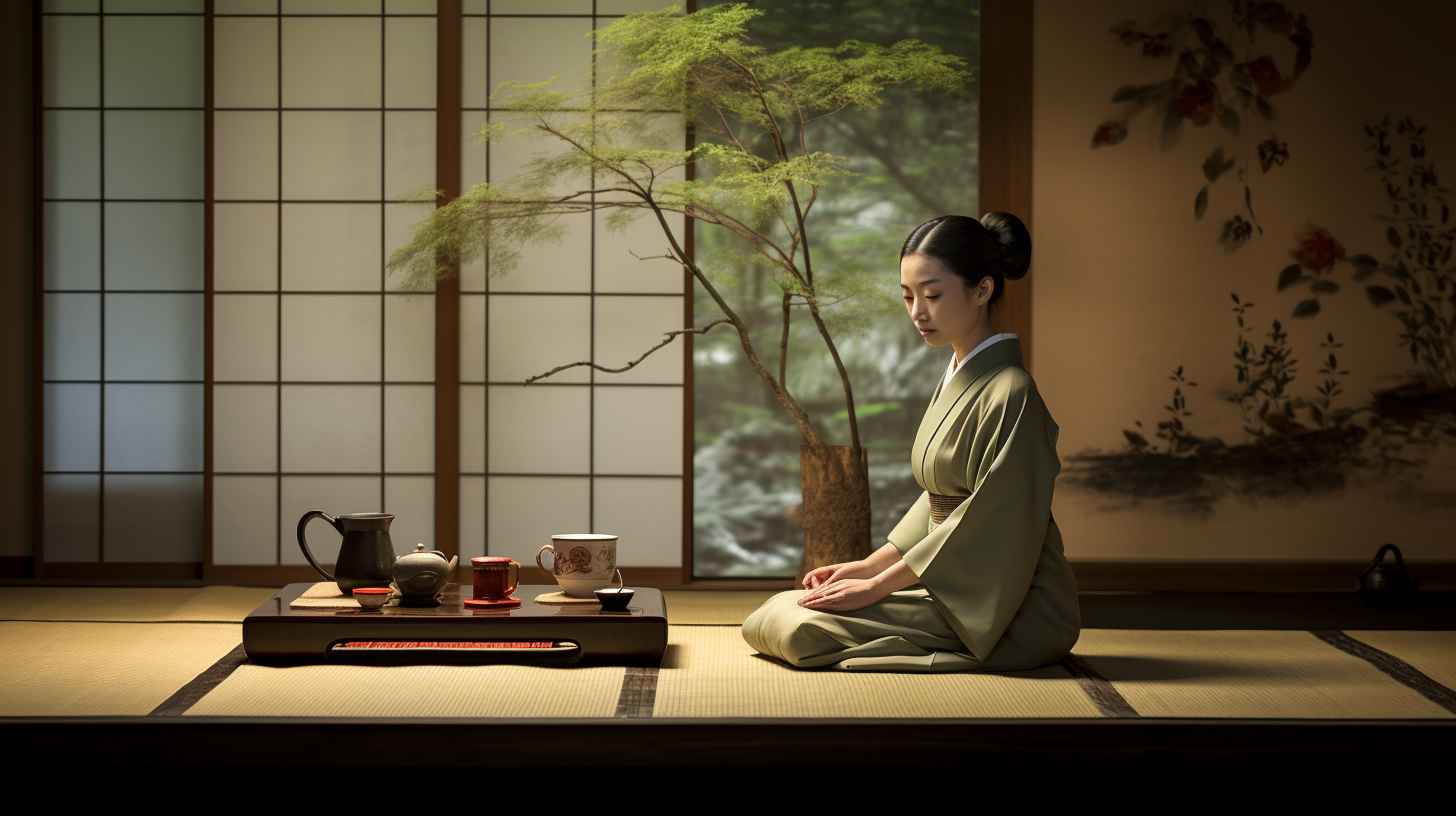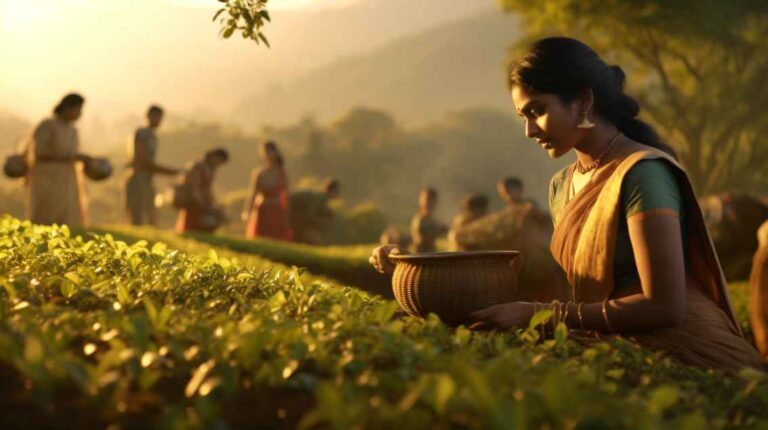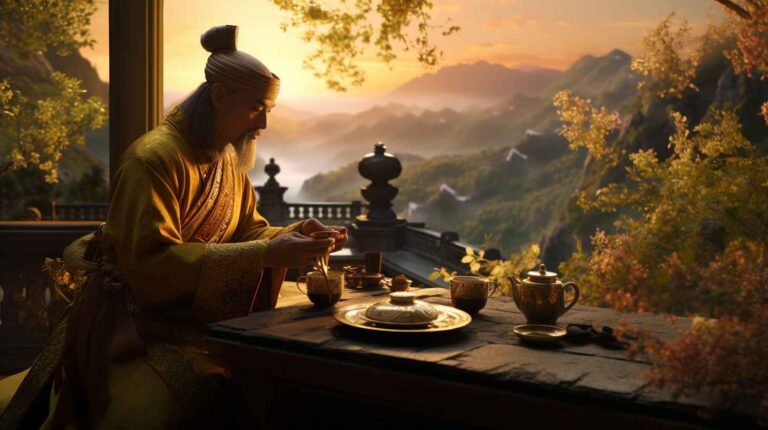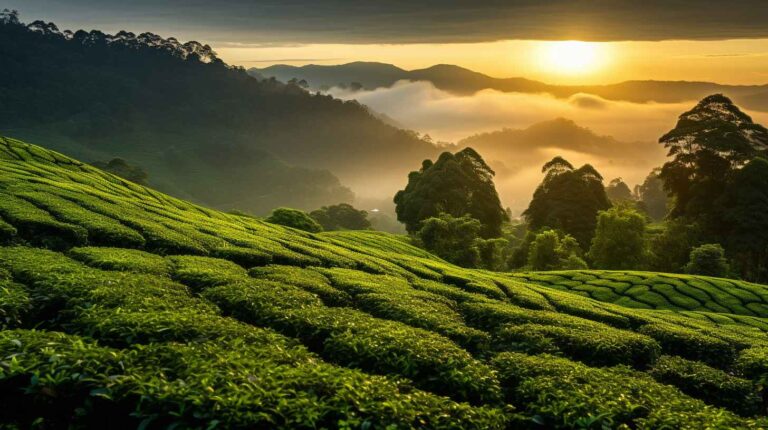The Ancient Rituals of Japanese Tea Ceremony
Introduction
The Japanese tea ceremony, often referred to as chanoyu, sado, or chado, transcends the basic act of preparing and drinking tea. It is a profound spiritual journey that encapsulates the principles of harmony, respect, purity, and tranquility. Melding art, history, and philosophy, this ceremony has evolved over centuries and is firmly woven into the fabric of Japanese culture. It’s a dance of aesthetics, an orchestra of movements, and a symphony of the senses.
Historical Origins
Tea, originally cultivated in China, has a history that dates back millennia. But its journey from being a mere beverage to a ritualistic experience is a tale worth exploring. It was during the 8th and 9th centuries that Buddhist monks, traveling between China and Japan, introduced the meditative practice of consuming tea to the Japanese. This was not just the introduction of a drink but an entire culture.
Over the subsequent years, as the ceremony took root in Japan, it began to metamorphose, embracing local aesthetics and principles. Japanese aristocrats and intellectuals began to value the tea ceremony not only as a religious ritual but also as an expression of status and taste. Through several dynasties and eras, the tea ceremony evolved, incorporating influences from Japanese art, architecture, and philosophy.
Understanding the Four Principles
Harmony (Wa):
Harmony, in the context of the tea ceremony, is an intricate tapestry woven from many threads. It’s the culmination of the connection between the host, guests, and the environment. The tea room, with its carefully curated artifacts, the meticulously selected tea utensils, and even the topics of conversation, are harmonized to create a serene atmosphere. This principle extends beyond the ceremony itself, encouraging individuals to live in harmony with nature and fellow humans.
Respect (Kei):
In our fast-paced world, respect is often sidelined. However, in the tea ceremony, it takes center stage. Each action, from the first preparation to the final sip, echoes profound respect. But this reverence isn’t limited to the guests alone. The very utensils and ingredients, often passed down through generations or crafted by master artisans, are treated with immense regard. Each motion in the ceremony is a dance of intention and purpose, reminding participants of the value of mindfulness and the importance of every small detail.
Purity (Sei):
Purity in the tea ceremony goes beyond just the physical realm. It’s a journey towards spiritual cleansing. Before stepping into the sanctum of the tea room, guests engage in a symbolic act of washing their hands and rinsing their mouths. This ritualistic cleansing is a metaphor for shedding the burdens and dust of the outside world. Similarly, the host’s act of cleaning each utensil in the presence of guests embodies transparency, sincerity, and the idea of starting afresh.
Tranquility (Jaku):
Achieving tranquility is the zenith of the tea ceremony. It’s the moment when the heart and mind find solace. After imbibing the principles of harmony, respect, and purity, participants find themselves in a cocoon of peace. This isn’t just an escape from external noise. It’s an introspective journey, allowing one to experience a deep, meditative peace, emphasizing the beauty of living in the present.
Utensils and Their Significance
The tea ceremony isn’t just about the tea. It’s a ballet of movements, with each utensil playing a crucial part. Every item has been curated with thought, reflecting the season, occasion, or even the very essence of the host.
- Chawan: This isn’t just a tea bowl. Depending on the tea type, its size and shape can vary, each with its unique story, perhaps crafted by a master potter or inherited from a revered ancestor.
- Chashaku: This bamboo tea scoop, though simple in appearance, is a testament to the craftsman’s precision, ensuring the perfect quantity of tea is transferred to the bowl.
- Chasen: Crafted from bamboo, this whisk is an art piece in itself. It ensures the tea blends perfectly with water, creating the ideal consistency.
- Mizusashi: This cold water container isn’t just functional. Its design and placement play a role in setting the ceremony’s ambiance.
- Kettle: Historically made of iron, this isn’t just about boiling water. It’s a symbol of warmth and hospitality.
- Fukusa: More than a silk cloth, the Fukusa’s usage by the host to handle hot tea utensils showcases respect and care, ensuring that each piece remains untainted.
To truly appreciate the tea ceremony, one must understand the silent dialogues between the host, the guests, and the utensils. Each piece narrates its tale, adding layers of depth to the ceremony.
The Flow of the Ceremony
Every movement in the tea ceremony is a carefully choreographed dance, embodying centuries of tradition. The host initiates the ceremony by sanctifying each utensil, an act that sets the tone for the entire ritual. The matcha, a powdered green tea, is then reverently scooped into the tea bowl. With the addition of hot water, the mixture is whisked meticulously until it attains a frothy texture. Serving the tea is an art in itself. The host presents the tea to the guests in a specific sequence, usually commencing with the guest of honor. Each guest, in turn, pauses to admire the bowl’s craftsmanship before savoring the tea in three to four deliberate sips.
Tea Varieties and Their Importance
Though the Japanese tea ceremony predominantly revolves around matcha, it’s essential to understand the depth and range of this powdered green tea. The ceremony’s essence can shift based on the type of matcha chosen:
- Usucha (thin tea): The most prevalent type of matcha in tea ceremonies, Usucha, presents a lighter, frothy consistency, making it the ideal choice for most occasions.
- Koicha (thick tea): A more luxurious variant, Koicha offers a denser texture and is reserved for more solemn ceremonies. Its rich flavor profile provides a deeper experience, often evoking introspection.
The selection of the tea not only influences the ceremony’s ambiance but also accentuates its underlying theme, adding another layer of complexity to this already intricate ritual.
Conclusion
The Japanese tea ceremony isn’t just an event; it’s a journey through time, art, and philosophy. Every sip, every movement, every moment invites participants to delve deeper into the present, fostering connections not just with each other but also with history and nature. As we delve into its ancient rituals, we unearth lessons on mindfulness, appreciation, and the sheer elegance of simplicity, reminding us of values that, even in our modern world, remain timeless.






